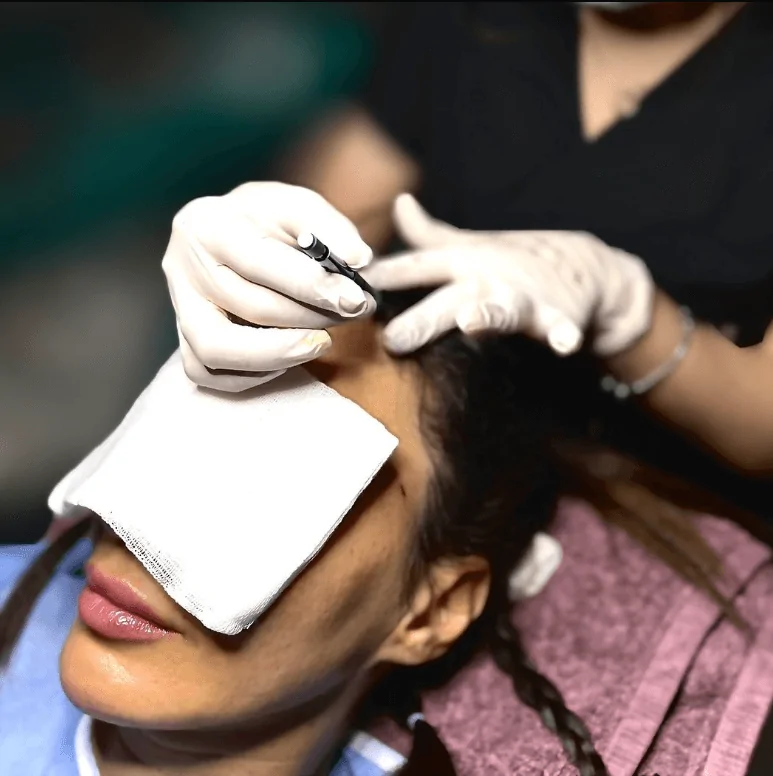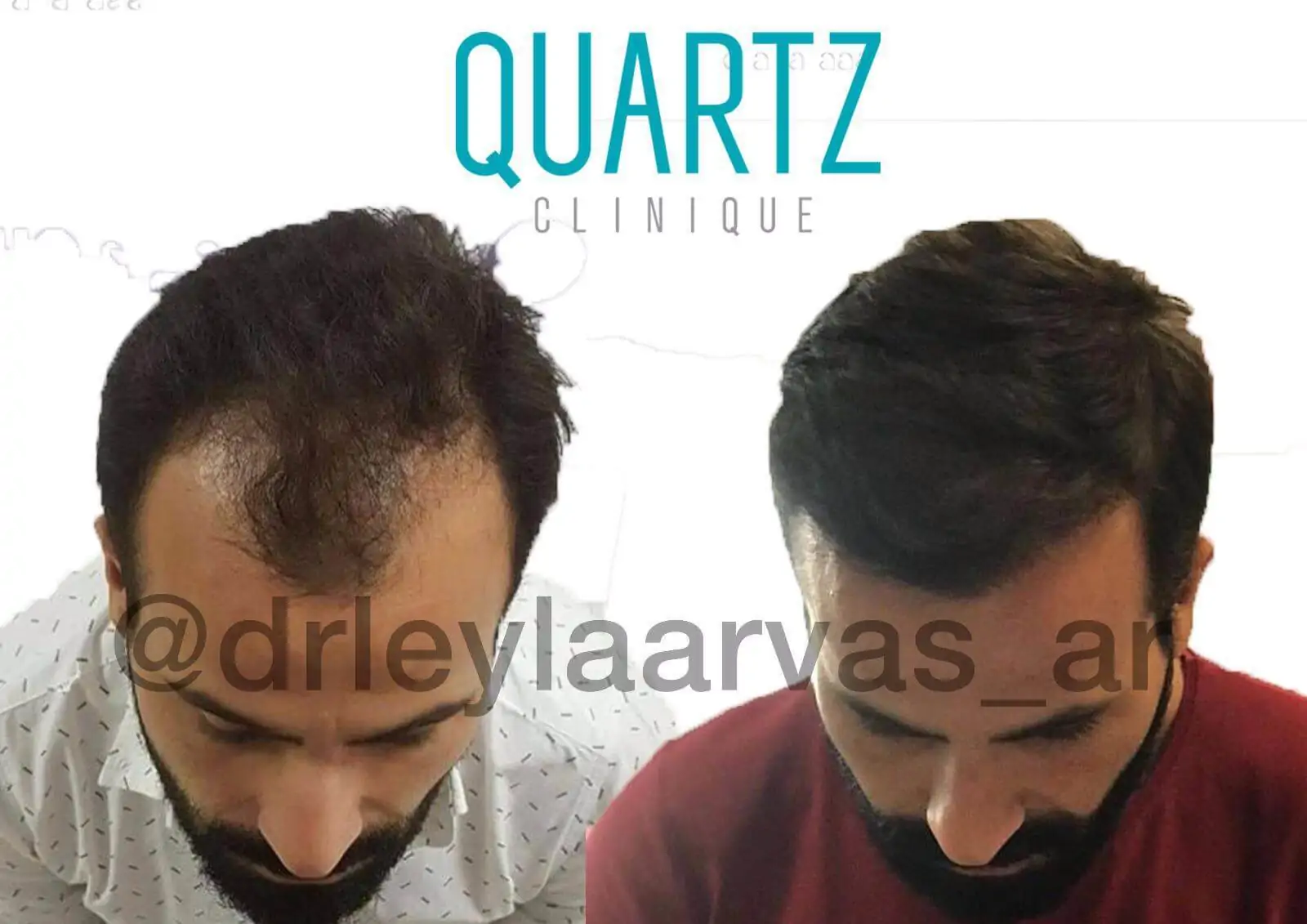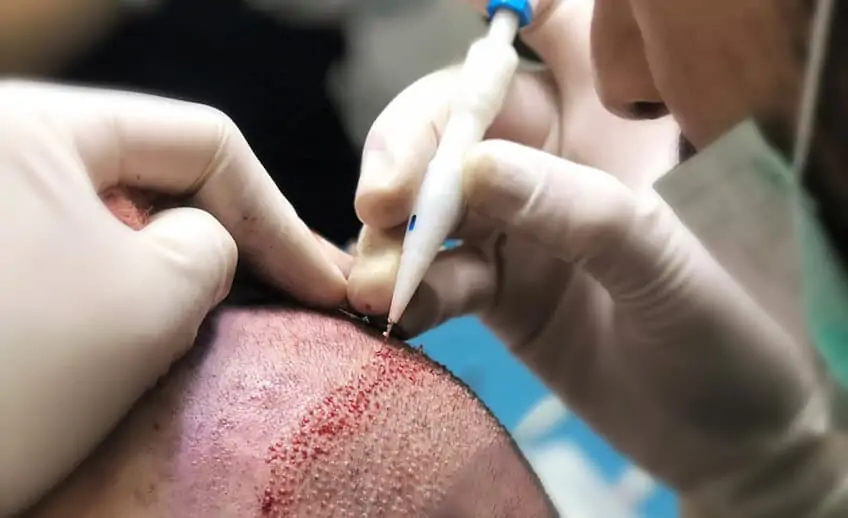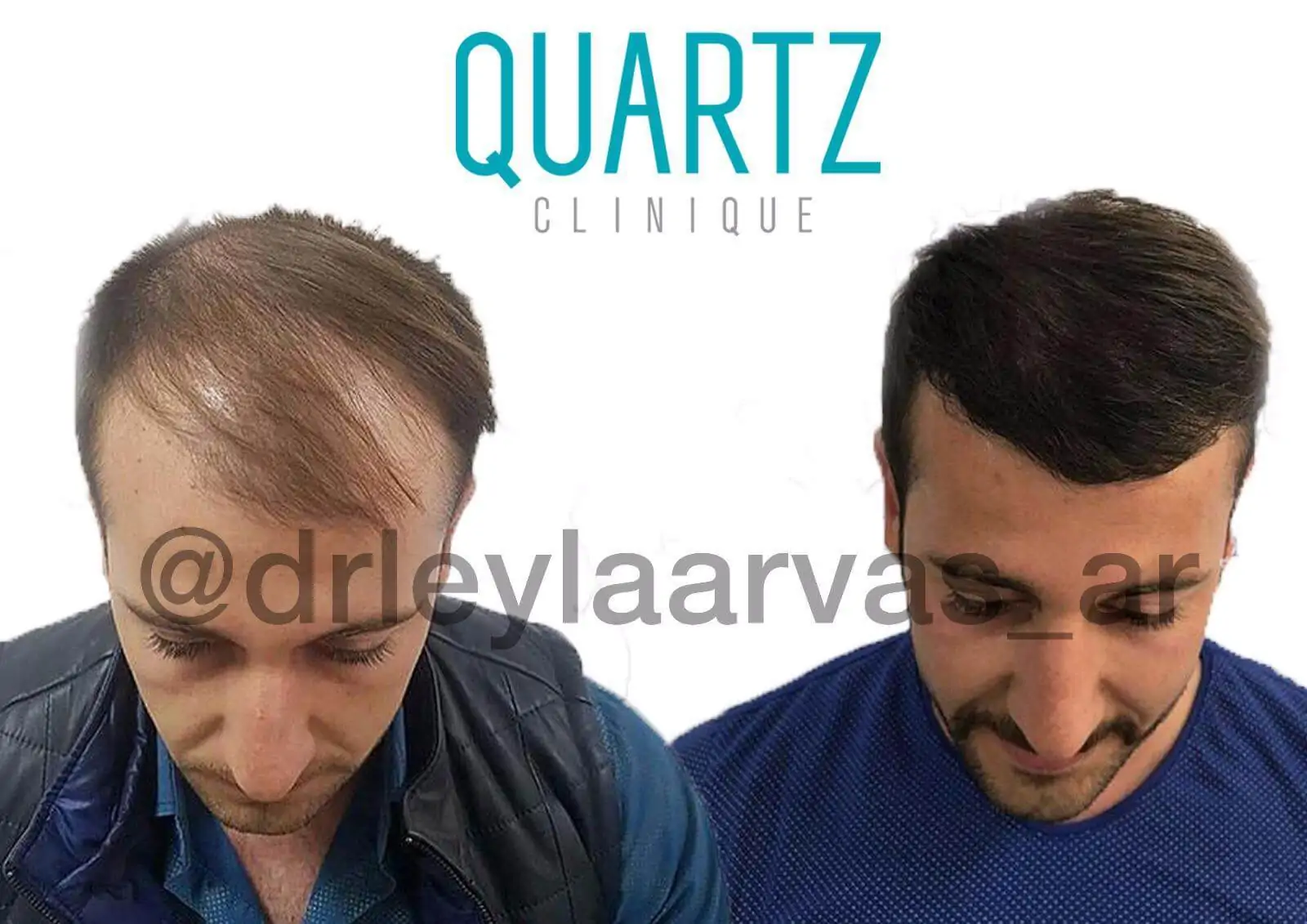What is Hair Transplantation?
Hair transplantation is a permanent solution to baldness. It is a practical method that has been preferred by doctors and patients for many years.
During hair transplantation, bundles of hair follicles, called follicular units or grafts are taken from the nape area behind the two ears and transferred to the area where hair growth is desired.
After hair transplantation, people feel happier and more peaceful. Hair follicles that have been shed with hair transplantation are recovered and a permanent result is obtained.
Hair transplantation is a complicated procedure. The two main rules of the procedure are that the transplanted hair looks natural and that the donor area is not damaged.
This affects the density and appearance of the hair that grows after hair transplantation. It is very important that hair transplantation is carried out by a doctor who is an expert in the field and an experienced team who are also experts in the field.
Do Hair Transplants Work?
The person’s hair style, color and length reflect his/her stance in life, taste, style and inclinations. While having abundant hair reflects the person’s youngness, lack of hair makes him/her be perceived as old.
The person experiencing hair shedding feels socially and culturally imperfect and loses his/her self-esteem.
This negative perception negatively affects people in all areas. Thus, our hair is very important to us.
Despite all its negative effects on people, 50% of the men over 50 face hair shedding problems. To end this problem, people try treatment options lasting for years.
Unfortunately, it is not possible to make hair shed regrow with medical treatments, and in our modern world, the most effective known treatment for hair shedding is hair transplantation.
Who are Good Candidates for Hair Transplantation?
People who have reached a certain level of hair lightness and have decreased active hair loss are the most suitable candidates for hair transplantation.
If people with hair loss and hair loss problems also have additional diseases, their suitability for hair transplantation may be adversely affected. To give an example; eczema, psoriasis etc. If there are these diseases that cause rashes on the scalp of people with active disease, the result of hair transplantation is adversely affected.
Before hair transplantation, the doctor’s opinion should be taken and the necessary treatments should be applied accordingly, and then the patient can be ready for hair transplantation.
What are the Reasons for Hair Shedding?
It is said that the underlying reasons for the baldness problems include weak circulation on the scalp, vitamin deficiency, dandruff or wearing hats frequently. All these theories were proved to be wrong.
The reasons for hair shedding include the following:
- Aging
- Hormonal changes
- Genetic reasons
- Traumatic reasons or burns
What is Men Hair Transplantation?
Today, the number of men who want a hair transplant is more than women who want a hair transplantation. Men take the first place in hair transplantation.
Especially as people get older, they may encounter hair loss due to environmental factors, physical or mental problems. In some cases, men may experience hair loss at an early age due to genetic predisposition.
Hair loss; It can also occur due to serious diseases, excessive use of foreign substances. Adults over the age of 18 can have hair transplantation. As soon as the beginning of hair loss is noticed, the person’s treatment to stop the hair loss ensures that the hair loss process is prolonged.
If the person has experienced hair loss, hair transplantation treatment without waiting too long gives good results. In hair transplantation performed by removing hair follicles in men, effective results are obtained even if the shedding phase is very advanced.
Today, men have hair transplants, especially after the age of 40, but every man can have hair transplantation after the age of 18. It should not be expected to lose all hair to be treated.
It is a more correct attitude to intervene in the first stages of hair loss. Hair follicles to be transplanted in hair transplantation are resistant to shedding.
The transplanted hairs shed later than other regions. In hair transplantation performed with the FUE method, approximately 5000 hair follicles can be transplanted in a single operation in men.
It would not be correct to give an exact number because these numbers may vary depending on the condition of the man and the donor area.
It is not recommended if too many roots need to be transplanted because the blood supply of the scalp is impaired and this affects the success of the clear transplantation process.
In addition, complications of necrosis may occur due to impaired circulation. If multiple grafts are required for the open area in hair transplantation, it is recommended to transplant hair twice. In this way, permanent and effective results are obtained.
 What is a Woman Hair Transplantation?
What is a Woman Hair Transplantation?
With the problem of hair loss, women now resort to hair transplantation. Today, hair transplantation is known as the method preferred by men, but contrary to what is known, it is a method preferred by women too.
Hair transplantation in women is carried out in line with the same techniques as in men.
In hair transplantation treatment methods, it does not matter whether it is a woman or a man, that is, gender.
Which treatment technique will be applied to which patient depends on the patient and the doctor.
Hair loss can occur in women during puberty. Other issues that cause hair loss can be that women deal with their hair too much. Hair dye, blow dryer, hair styling, hair care products.
It can cause an increase in the severity of hair loss and future baldness. The reasons for hair loss in women can be as follows:
- Irregular and unhealthy diet
- Psychological problems
- Hormonal irregularities
- Use of devices such as blow dryers, straighteners, tongs
- Hair dye
- Hair loss during and after pregnancy
There is only one difference between male and female hair transplantation. This difference is that men are completely shaved before hair transplantation, while hair transplantation is performed without the need for shaving in women.
Hair transplantation in women takes about 6 hours. During hair transplantation, the roots taken from the nape of women are transferred to the area where the hair loss occurs, and the procedure is performed.
The treatment is done in a single session, the three-hour part of the treatment includes the collection of hair from the donor area. In the other 3 hours, the planting process is carried out on the problem area.
On the 3rd day after the operation, women can clean their hair with the permission of the doctor. Women can do the cleaning process with a special lotion and special shampoo given by the doctor.
During the cleaning process, massage, hard blows, different shampoos and conditioners should not be used. If care is not taken, it is very difficult for the hair follicles to settle in their new place.
Damage can be done. As a result, the operation may not be successful. After hair transplantation, there may be redness or crusting on the skin. This may take up to 10 days. Then the patient can continue her daily life.
Hair Transplant Methods
Technology in the field of health is developing day by day in Turkey. Hair transplantation is the first of the aesthetic surgery operations, which are mostly preferred by men.
There are certain methods used for hair transplantation. After the examination, the doctor who will perform the procedure decides which method will be suitable for which person.
Each technique has its own good and bad aspects. The important thing in hair transplantation is to use the correct and appropriate technique in the right patient. A doctor who is an expert in his/her field and a fully equipped clinic should be preferred in hair transplantation.
Hair Transplantation Techniques Used Today are as Follows:
- FUE (Follicular Unit Extraction) Technique
- FUT (Follicular Unit Transplant) Technique
- DHI Technique
- DHI Plus Gold Technique
Which method of Hair Transplant is Best?
 FUE (Follicular Unit Extraction) is a method that started to be applied in the 2000s and is frequently preferred because it is not a surgical procedure. FUE technique applied under local anesthesia gives more effective results than other methods.
FUE (Follicular Unit Extraction) is a method that started to be applied in the 2000s and is frequently preferred because it is not a surgical procedure. FUE technique applied under local anesthesia gives more effective results than other methods.
The least damaging method in hair transplantation is FUE.
Unlike other hair transplantation techniques, the FUE hair transplantation method is a micro-surgery and does not pose risks such as pain, wounds, infection, bleeding and scarring as in general surgeries.
The grafts taken from the patient are grouped according to the roots they contain and are prepared for planting.
The hairline is determined at the application site. Considering the direction of the existing hairs in the area, small holes are opened and the procedure is performed. No damage is done to the existing follicles during these applications.
Since the grafts taken with the FUE hair transplantation method are standard, sowing is performed by giving the desired angle to the hair strand without making an incision in the application area.
The FUE hair transplantation method brings the closest look to nature. Since it is open to technological developments, the benefits of technology are being used more and more every day. With FUE, baldness is eliminated in 85% of patients in a single session. A second session may be required in 15% of patients.
FUT (Follicular Unit Transplant) involves removing a narrow strip of scalp from the patient’s donor area. Each follicular unit (or ‘graft’) in the donor strip is then individually cut and transplanted into the recipient site.
Grafts typically contain 1-4 hairs each. FUT (Follicular Unit Transplantation) is a method that was applied before the 2000s and is frequently preferred because it is not a surgical procedure.
Whether grafts are taken with the FUT technique, they are processed under stereoscopic dissecting microscopes to prepare each unit for transplantation. It is essential that the integrity of these grafts remain intact during the dissection process.
 DHI Technique is a hair transplantation method in the sense of “Direct Hair Transplantation”. In this technique, the hair follicles of the patient are taken one by one from the donor area with micro motors, as in the FUE technique, and these collected follicles are placed in medical pens.
DHI Technique is a hair transplantation method in the sense of “Direct Hair Transplantation”. In this technique, the hair follicles of the patient are taken one by one from the donor area with micro motors, as in the FUE technique, and these collected follicles are placed in medical pens.
It is placed directly on the skin of the patient in the hair transplantation area without opening any incisions and channels.
In the known hair transplantation methods, these operations are performed separately, thanks to the special pen used in the DHI technique, the procedure is performed in one go. This technique provides comfort to the patient.
To summarize, in the FUE hair transplant technique, the procedure is three-stage, while in the DHI technique, the procedure is two-stage. The purpose of this technique is to increase the quality of hair transplantation and to provide the dense appearance of the hair.
It preserves the existing hairy image and, in this technique, where hair transplantation is performed without shortening the hair, the person can easily return to his daily life.
Since the grooving process and the hair follicle placement process are done at the same time, the collected hair follicles are placed without waiting for a long time. Existing hair is not damaged by DHI technique. This technique is also applied to people with incomplete hair loss. Recovery time is very short.
Is Hair Transplantation a Permanent Operation?
Hair transplantation is a permanent procedure. Genetically, testosterone has a hair shedding effect. However, follicles at the nape area that are transplanted are resistant against this effect. Transplanted hair remains in the application site lifelong.
After Hair Transplantation
For 2 days following the hair transplantation, one should not wash his/her hair and allow his/her hair to contact with water. The first wash is made at the hair transplantation center.
In the process that may last for six months after the transplantation procedure, one should not swim in the pool, not use very hot water in the shower, not expose his/her hair to high pressure water and avoid using hair fixing gels or sprays.
Besides that, during the period also known as the process of hair settlement, it would be beneficial for the patient to stay away from dirty or dusty environments, to cease alcohol consumption and smoking, not to do tiring activities and not to apply any other substance to the scalp than those prescribed by the physician.
How is the Hair Transplantation Recovery Process?
Occurrence of red spots and scabs in hair roots in the healing process is a very normal condition, about which the patients should not worry, and they disappear in a short time.
In the second process that commences a few weeks after the transplantation and may last for up to six months, weak hairs shed first and then, new hairs grow.
Most hair strands grow within 6 to 9 months after the operation. However, complete growth may take 1 year.
How Much does Hair Transplantation Cost in Istanbul, TURKEY?
Successful results are obtained when the doctor and doctor’s team, who are experts and experienced in hair transplantation, are applied together in a reliable clinic. Today, women and men get healthy and natural hair without side effects such as pain, thanks to what technology brings.
If you want to apply for hair transplant treatment, you can have your hair transplantation at Quartz Poliklinik, a trustworthy health institution in Istanbul, Turkey.
Hair transplantation treatments for women and men are successfully applied in our clinic. Hair transplantation prices vary from person to person and from procedure to procedure. You can learn the prices of hair transplantation in the most accurate way after hair analysis in the examination.
You can contact our clinic to get more detailed information about the price of hair transplantation and to make an appointment on the subject.
For Ministry of Health-accredited centers, it is not legal to specify prices on their website. Therefore, please dial 0212 241 46 24 to contact Quartz Poliklinik and get information on Hair Transplantation Prices In İSTANBUL, TURKEY.


